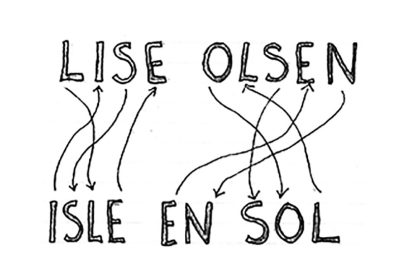Listening: In-between Focusing and Blurring
“It is important to relize that focussing on something necessarily blurs something else…”[1] F.G Asenjo
I organised a sound activity for some of the children during the August session of Quarrymill Adventures. Each child was given a sound recorder and headphones, and asked to find and record different woodland sounds. RSPB Volunteer Katie, even helped to make a woodland xylophone for the children to play and record!

I asked one child to record the sound of a bird singing. After a few minutes, the child came running back and informed me that no birds were singing in the woods today. I was slightly baffled and I stopped for a moment to focus on listening for birds. I heard Crows’ cawing, a Robin chattering, and a Woodpigeon cooing in the distance.
“Can you hear the Crows?” I asked. “No, I can only hear the water from the burn and the wind in the trees,” they replied. I needed to focus the child’s attention so I looked up into the trees. I could see a Coal-tit sitting on a branch. “Can you see the bird in the tree? Listen! It is singing?” I questioned as I pointed towards the bird. “Yes, I hear it tweeting and moving on the twig,” the child replied, as they eagerly pressed the red button on the sound recorder.
I began to reflect on the child’s experience of recording sound. I wonder if the sound of birdsong is so frequent; the sound of water and wind so predominant, they could not focus on listening to the bird singing. The action of listening is very different from hearing. Hearing is an ability we are born with; a passive process of our ears receiving signals at a subconscious level and requires very little concentration. Yet, listening is a skill we learn; an active process of interpreting the signals our ears receive at a conscious level and requires focus and concentration.
By introducing a visual element to the child’s perception (the bird in the tree) it allowed the child to focus on the birdsong. The child needed to blur the background noise of the woodland. They turned their body towards the sound. Their eyes located the sound source to help the ears hear and their mind to focus, filter and interpret the signal. This action presented the movement between focusing and blurring. For this child, the whole body was needed to focus and listen to a selected sound. This selective auditory attention is the ability to focus on a specific sound while filtering out other noises, it is also known as the cocktail party effect[2].
[1] Asenjo, F. G. (1988). In-between: an essay on categories, Center for Advanced Research in Phenomenology & University Press of America, Washington, D.C. P15
[2] Cherry, E. C. (1953). Some experiments on the recognition of speech with one and with two ears. Journal of the Acoustical Society of America, 25, 975–979.
